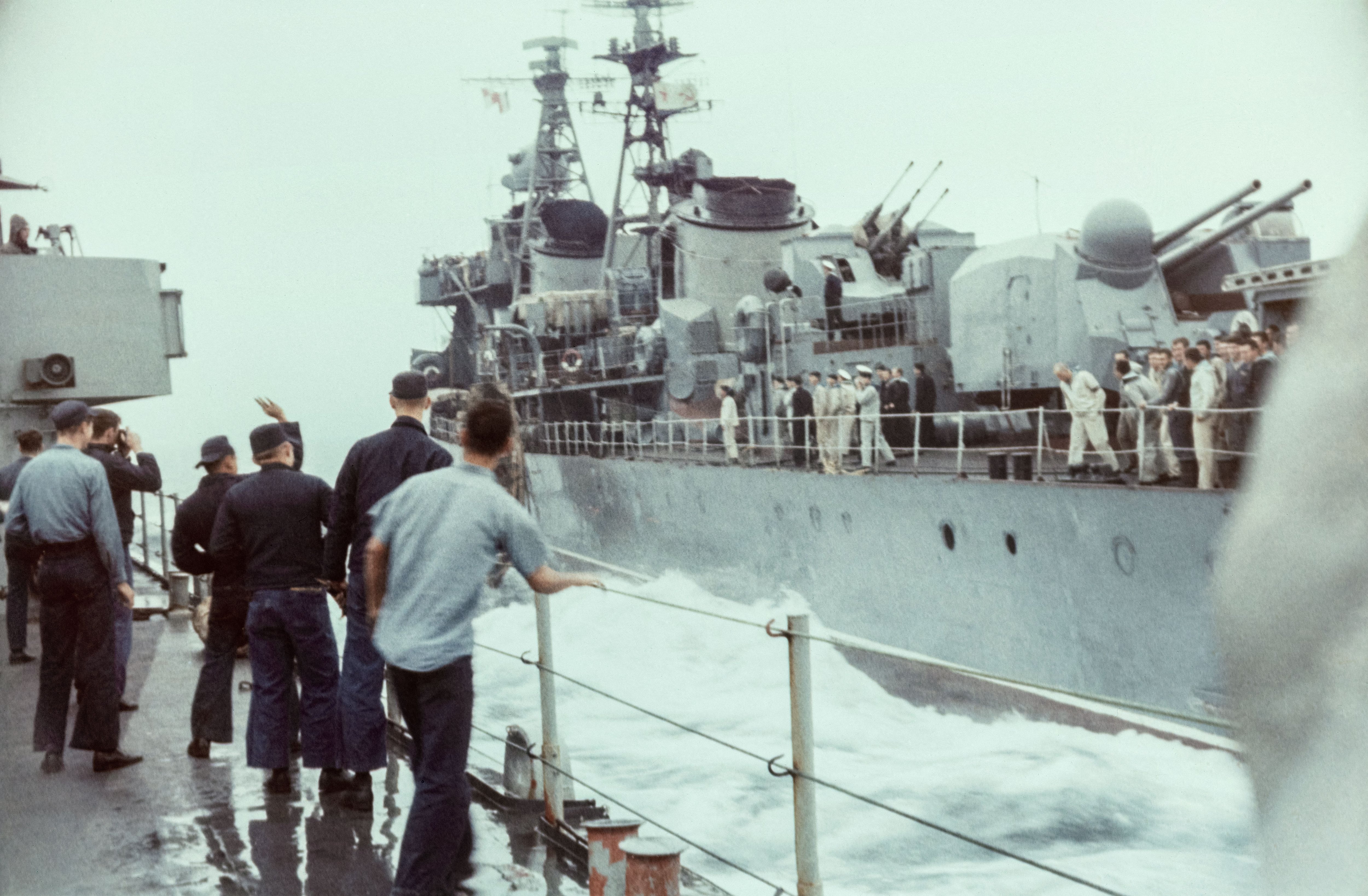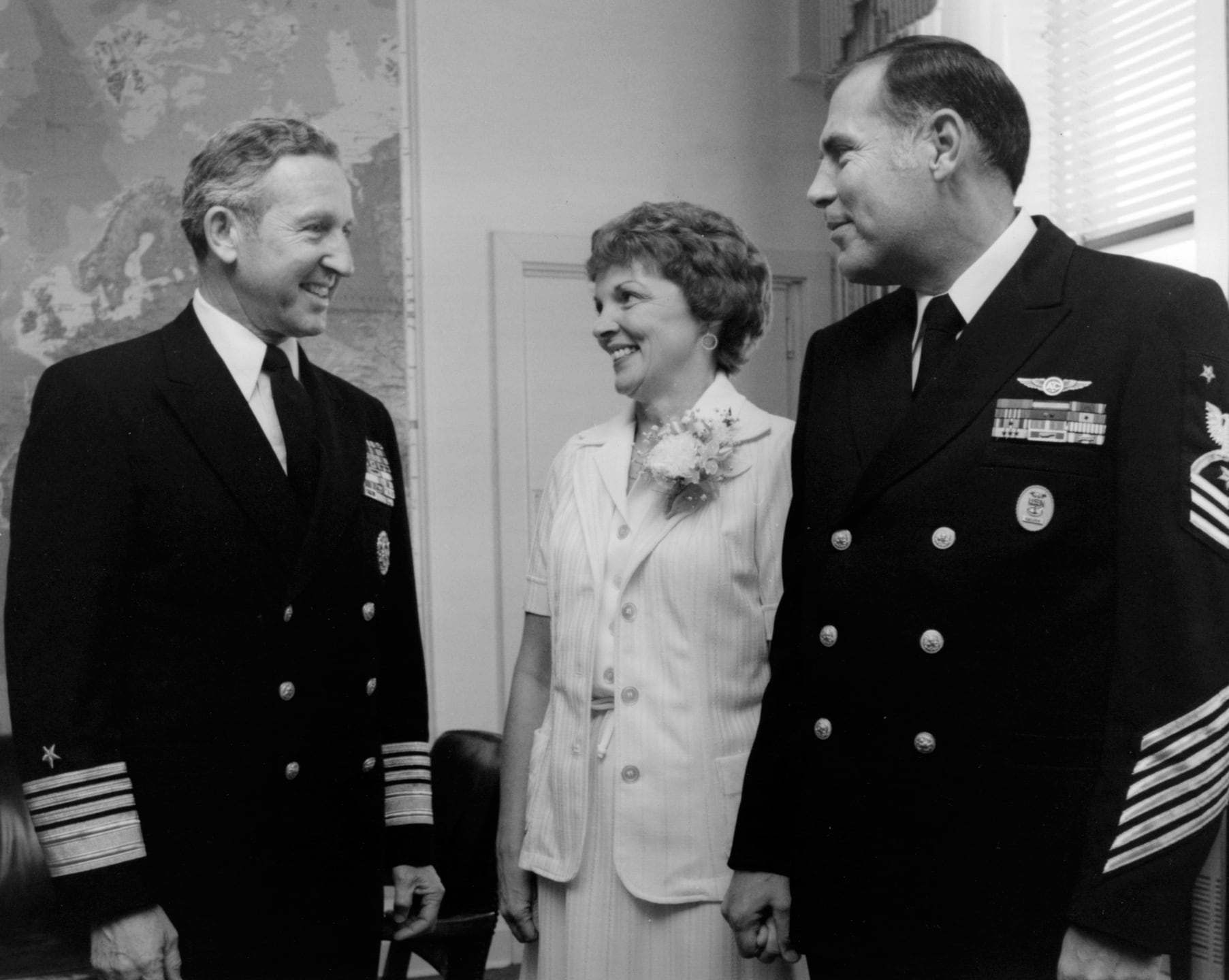The nomination of U.S. Pacific Fleet Commander Adm. Samuel Paparo to be the 33rd chief of naval operations could herald a renaissance in the CNO’s staff office not seen since the 1980s in terms of strategic and operational focus for the fleet.
Since the end of the Cold War, the naval service and its uniformed and civilian leaders have pursued a budget-based strategy, seeking to preserve the best and most capable ships in the fleet from post-Cold War downsizing, while at the same time keeping the service as relevant and engaged in post-Cold War land conflicts in the Middle East. The emergence of China as the “pacing” U.S. defense threat, along with Russia as an “acute threat,” is beginning to change some decades-old assumptions in U.S. military spending.
Similar conditions existed when another Pacific Fleet commander came to Washington to become the chief of naval operations in 1978. Adm. Thomas Hayward brought with him an equal wealth of operational and tactical experience preparing for high-end, great-power war in the Pacific that he translated into operational and strategic impact in the Office of the Chief of Naval Operations, or OPNAV. Hayward jump-started U.S. naval strategy by creating the CNO Strategic Studies Group program.
Following the election of President Ronald Reagan and the confirmation of strategy-minded Navy Secretary John Lehman in 1981, Hayward set in motion the process for creating the Maritime Strategy and 600-ship Navy of the 1980s that played a prominent role in Cold War victory and in shaping the post-Cold War era that followed.
Pacific Fleet: A good place to prep for CNO
Several future CNOs, including Admirals Chester Nimitz, Louis Denfeld, Thomas Moorer, Jim Watkins and Gary Roughead, commanded the Pacific Fleet before coming to Washington as CNO, but Hayward’s trail there was unique in that he came from direct preparation for conflict, potentially on unequal terms as well.
The Soviet Pacific Fleet in the 1970s and 1980s was a growth organization and comprised 120 submarines, two carriers and 85 surface combatants. Adm. Hayward and his staff were concerned about the growth of the Soviet fleet in both the Pacific and the wider world.

His “Sea Strike” concept directed the Pacific Fleet to take the fight to the Soviet Pacific Fleet and its bases early in the conflict.
At its zenith, Hayward’s plan — developed by staff officers including Capt. Jim Patton, Capt. Bill Cockell and science adviser Dr. Al Brandenstein — envisioned four carrier groups working to attack Soviet bases in the Pacific, specifically Petropavlovsk, and to prevent Soviet forces there from reinforcing their European front as they did in World War II.
An offensive mindset
Adm. Hayward became the 21st chief of naval operations in June 1978 and immediately began pushing his offensive mindset on the Navy, Congress and the Carter administration. Immediately Hayward sought to “change the terms of the debate from a budget battle to an analysis of the strategic issues for a global maritime power.” Hayward warned Congress that the U.S. Navy had a “margin of superiority” over the Soviets, but that long-term trends did not favor the Navy and “we will lose our margin of superiority,” which could “evaporate by the mid-1980s.”
Hamstrung by Carter administration officials not interested in an offensive Navy, Hayward focused on readiness and training. The Navy’s leadership did not campaign for particular force levels, but in the absence of a larger budget it worked with Congress to ensure a highly ready Navy with adequate manning.
He and his staff also wrote an interim strategy document titled “CNO Strategic Concepts” with 17 points, many of which would be familiar today, including the facts that the U.S. Navy was too small; would likely be outnumbered by its Soviet counterpart for the immediate future; and would have to fight with the forces on hand in probable, unfavorable positions — but should rely on technological superiority and the forces of allies to be able to inflict outsized losses on its opponent.
Hayward also emphasized the global nature of any future war, as opposed to just one front, and that regardless of local or global weakness in conventional forces, the U.S. Navy must adopt an offensive mindset against the Soviets.
Adm. Hayward’s strategic, offensive mindset shifted into high gear following the election of pro-Navy President Ronald Reagan in November 1980, and with him the promise of a 600-ship naval force that includes 15 aircraft carriers and 100 submarines. In an April 1981 speech to the U.S. Naval War College’s Current Strategy Forum, Hayward said: “There is no dearth of strategic thinking going on these days in your Navy. What is lacking is a more useful way to capitalize upon that abundant talent with more alacrity.”

Acting on this observation, Hayward created the CNO’s Strategic Studies Group, an annual, yearlong assembly of upwardly mobile Navy captains and Marine colonels with the mission of making these the “best and brightest of military officers” — a group that would provide “stimuli relative to strategy and tactics.” Hayward also directed his staff to change how it determined its annual program objective memorandum input to Congress. The strategic input Hayward desired became the genesis of the classified 1980s Maritime Strategy, and later an unclassified version in the pages of the U.S. Naval Institute Proceedings journal in January 1986.
All his efforts were aided by the presence and direct support from strategy-minded Navy Secretary John Lehman, a situation that Capt. Patton called “Two Guys in the E-Ring cockpit ... working together to mature SEA STRIKE and SEA PLAN 2000 (both Prompt Offensive Action strategies) into what became the Maritime Strategy.”
2023 and onward
Like the appointment of Adm. Hayward in June 1978, the potential appointment of Adm. Paparo in July 2023 is fortuitous in setting the stage for the return of an aggressive maritime strategy in response to Chinese and Russian aggression. Like Adm. Hayward, Adm. Paparo has spent the last several years on the frontiers of U.S. naval efforts in the Indo-Pacific region far from Washington, D.C., and the disappointing levels of Navy readiness and ship numbers. Like Hayward, he too has also spent several years in exercises that pushed the capabilities of his Pacific forces, and included strong allied and partner participation. Paparo has also been an OPNAV programs and budget analyst, and is the graduate of four war college programs. These qualities alone suit him well to the position of CNO.
A strategically and operationally minded chief of naval operations today has the potential to refocus the Navy on offensive action rather than defensive responses to Chinese or Russian actions, and might invigorate the development of a worthy successor to the 1980s Maritime Strategy. While some have suggested that the 1986 Goldwater-Nichols Act precluded the development of service strategies, the examples of U.S. Marine Corps Commandant Gen. David Berger’ Force Design 2030 and Expeditionary Advanced Base Operations concepts suggest that service strategies are fully viable in the current environment.
The Navy has long been without an operational level of war strategy to fully guide its force design, size and operations in both peace and war. The appointment of another strategic-minded PACFLT leader to the CNO post may be the “drawing of the sword from the stone” moment to put the Navy back on course to the forward, aggressive mindset that has guided so much of the service’s proud history.
Steve Wills is a naval strategy, policy and surface warfare expert at the Navy League’s Center for Maritime Strategy.





